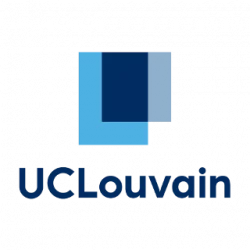Start’up Troubleshooting
- Log in as “student” with the password mentioned in the auditorium and the slides.
- If your virtual machine does not boot, you can check the boot log with a right-click on the virtual machine entry in VirtualBox.
The kernel installed on ubuntu server *requires* PAE/NX extension to be enabled in your virtual box. This can be tuned in Settings>System>Processor for your virtual machine. - Ubuntu remembers which “network card” you have installed, so that interface IDs (i.e. eth0, eth1…) is consistent when you reboot. This may cause you to lose network connectivity when you copy your .vdi from one machine to another. If that happens (boot stalls on networking setup) reset the content of your /etc/udev/rules.d/*persistent-net.rules file.
Building Kernel Troubleshooting
- The config file you’ve been given should provide all the options for a i386 build of the reference kernel sources. If you’re prompted with [Y/n/m] questions in “make oldconfig” step, you’re very likely to be trying to compile an amd64 kernel itself, which won’t work on the reference virtual machine. It is mandatory to compile the kernel in i386, see Shell, Linux and Kernel slides for more informations.
- “CONFIG_DEBUG_SECTION_MISMATCH errors” essentially occurs when you’re including unsafe drivers in your kernel. Unless you’re experiencing this during “make bzImage”, you can safely ignore this.
- quota exceeded while building may occur on ms8xx, with various error messages. use quota -v -s to check how much more space you can eat on the shared filesystem (/home). kdirstat $HOME can assist you in finding files that take too much room. You have 500Mo allowed, clearly not enough to build the kernel in your home directory. Beware, the compiler suite installed on ms8xx makes use of a “compiler cache”, in the (hidden) $HOME/.ccache directory. You’d more likely want to use some location in /tmp for that purpose. If that’s the case, create a personal sub-folder and export CCACHE_DIR=/tmp/OS$USER/ccache before you start compiling the kernel. Alternatively, you may prefer to restrict the size .ccache can grow. Check out the manpage for details.
- permission denied during make install might occur. Part of the ‘install’ process is designed by your distribution maintainers for upgrading the distribution itself. This usually happens after vmlinuz and friends have been copied to $INSTALL_PATH, so most of the times, you do not need to bother.
Booting Kernel Troubleshooting
- “init: failed to create pty…” errors on boot? may occur with your custom-built kernel. It’s annoying, but it’s not just you: it’s a bug not yet fixed in the distributed image. Retrieve the update definitions with sudo aptitude update and then selectively upgrade the buggy package (upstart): sudo aptitude upgrade upstart.
the screen is completely black with your new kernel ? don’t panic (yet). Chances are that you’re missing some modules. The kernel has started, but cannot access some hardware (including fancy graphic modes). Try out the “recovery mode” for the corresponding kernel, then dig kern.log for an explanation. Use “insert CTRL+ALT+DEL” on your vbox’s “Machine” menu to return to the boot. - booting takes ages. Most likely, you’re stuck at network configuration. That may take several minutes when no network card is found (cf. Startup) or when modules for the network card cannot be located.
